It is known that managing waste is a huge problem for contemporary societies. Especially for our occidental societies based on consumption that producers are not responsible for the after life of their product and that we are so worried about time and all the daily business that we just pay for out government to deal with it and just forget about it.
In the other hand nature is not like that. There is no waste. From cradle-to-cradle. From the first carbon molecules that forming each component from nature until the decomposition of this molecules by bacterias and other microorganisms, so what can we take from that?
This is the main idea of the Supra-Digester Project. The project consists of creating a network of bio-digesters that turns waste into nutrients for the city, instead of just dumping leftovers from our consumption back on nature the city ecosystem manages itself them and use them to warm up economically, socially and productively.
As we can see in the maps below Barcelona is provided with a vast and complex network for its waste management, where from consumers the waste goes to local places called Local Green Dots. Those Local Green Dots in turn bring all the waste to Zone Green Dots located in the boundaries of the city and there they forward everything to Sorting Plats where once sorted each type of waste goes to a specific destination usually managed by private companies and from where we can’t take too much information.
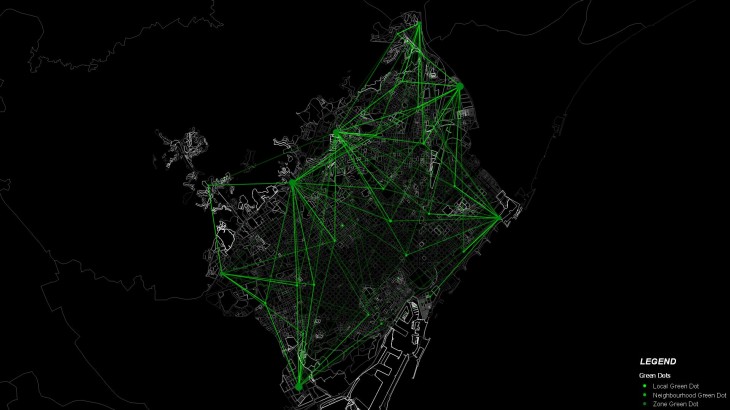
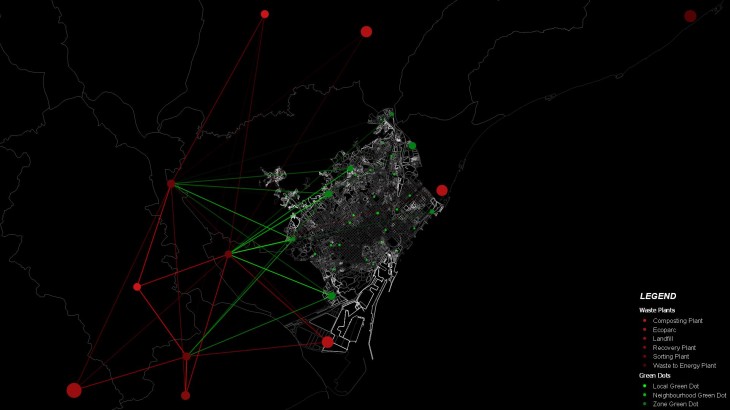
So even having a well organized system there are several gaps that get more and more critics as long as our consumption increase, such as: What dos happen with the e-waste? How much from this waste is dumped in-landfills and marine-disposals? How much of this waste is not properly treated?
Facing this issue is an indispensable task for urban planners and urban desigers now.
So, analysing how is the matter cycle among the existing ecosystems in Barcelona what can we get:
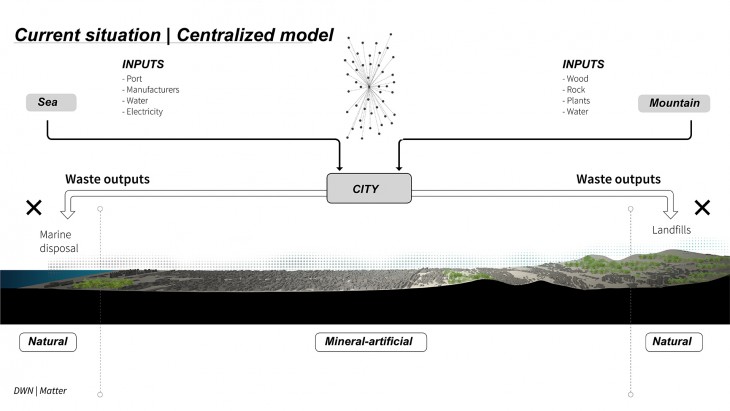
The urban ecosystem gets all the matter from nature and just dump it afterwards back to the natural ecosystems, through landfills, marine disposals or even waste exportation.
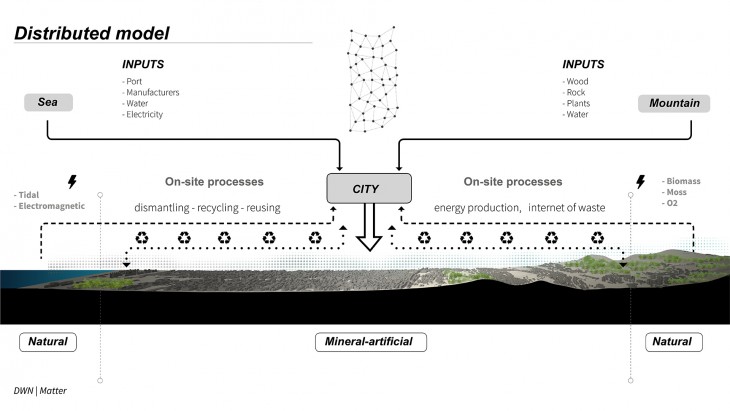
Shifting this relationship should be so the key for our problems and a much more fair trade with other ecosystems. So, even still getting matter from nature, the waste now is processed within the city and used again as fuel for several activities and for an emerging economy, so we could even think in a more optimistic future about a decreasing of exploitation for raw material.
This looping system could be understood then as the digestion of goods and supplies where a looping system could make them turn into new nutrients for the city itself.
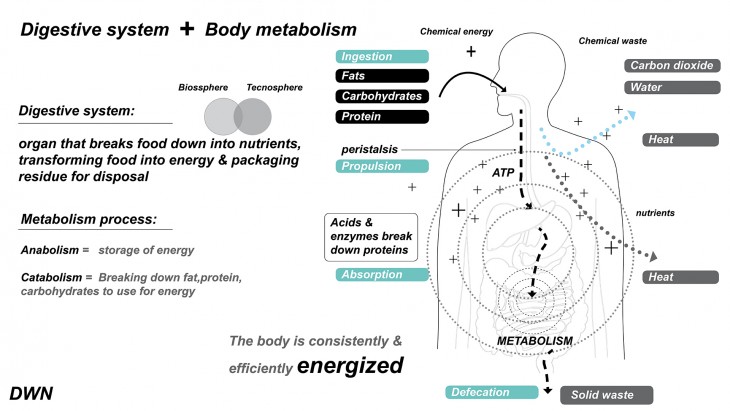
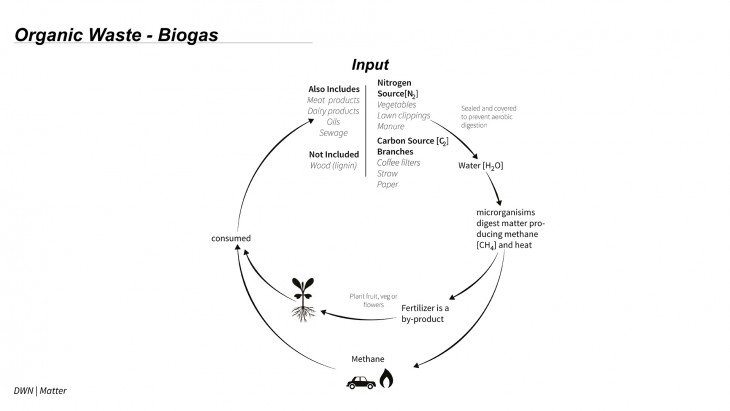
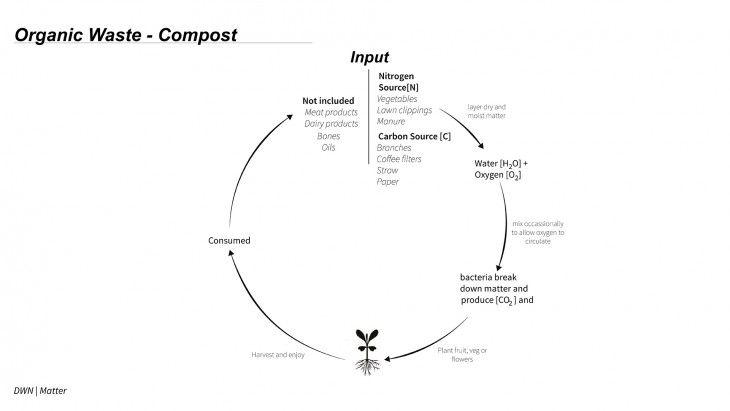
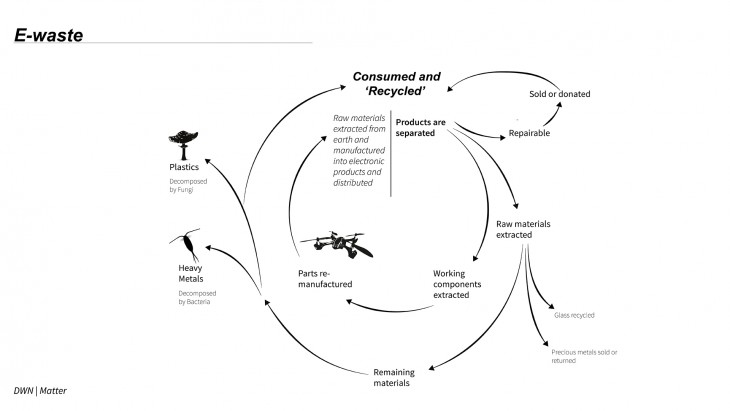
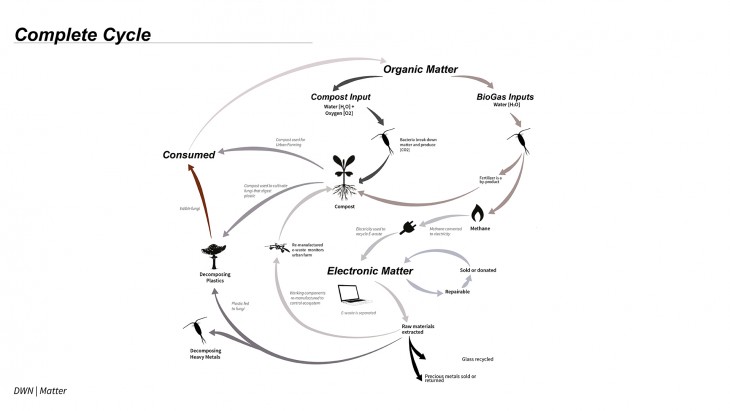
So, to understand better how this network could be possible, a prototype of a waste treatment looping system was created to link organic waste and e-waste following the previews flowcharts.
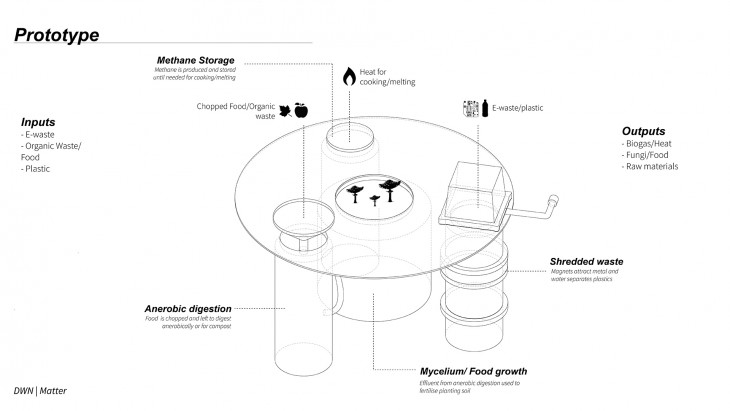
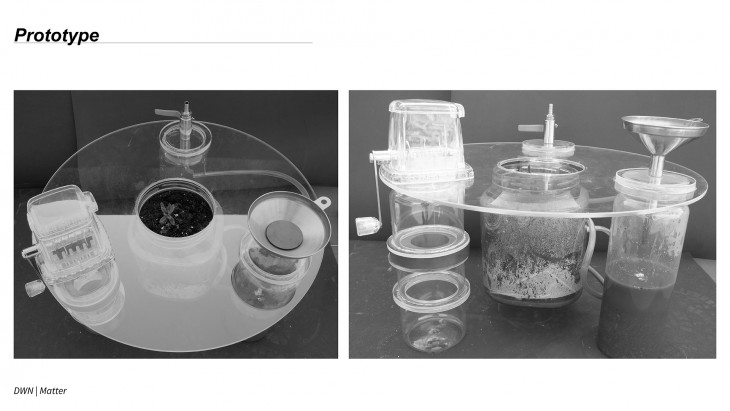

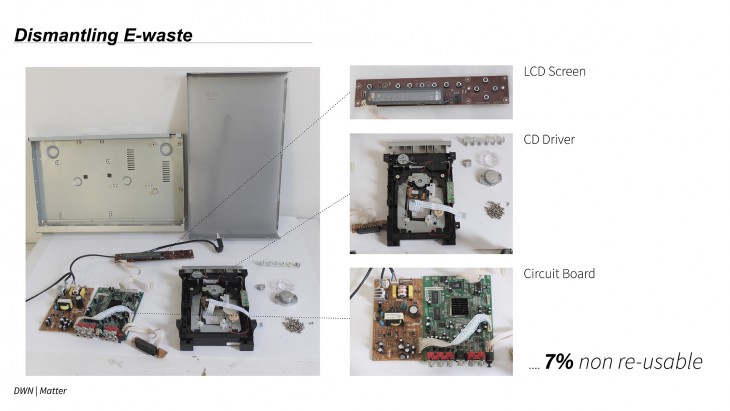
So, if we have the city as the body and the Supra-Digester as the digestive system our next step is to determine the cells, micro-units responsible for breaking and transporting our nutrients.
The citizens as actors.
Once the digestion process is determined remains to know how nutrients act on the body of the city. To do this we must analyze three hypothetical scenarios in the film below we see how different realities that can fit in the different stereotypes of the citizens of the city of Barcelona and how they would benefit and how they would act.
The combination between citizens, city consumption and nutrients bring then an emerging economy where waste is not anymore a government matter but one important aspect of the city as a society where the individual efforts come back as energy saving, purchasing power, social insertion and urban attractor.
The new urban sprouts formed by the fablabs where people will learn how to properly deal with some type of waste, build new things from the reconfiguration of old ones, children will have activities and learn about this new valuable component of the society, the new urban gardens where there will be people working and so on will be the new attractors for the formation of new urbanities and new neighborhoods and this will be a changing point for this new nutrient based society.
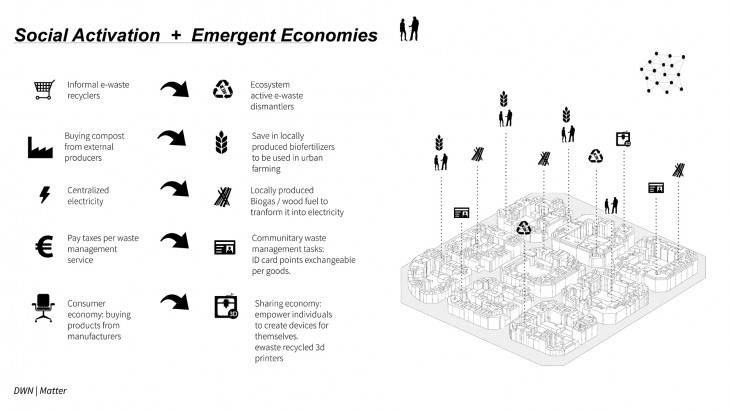
Instead of this sterile one direction relationship that we have in contemporary cities, this new emerging economy design new social contracts in the society where government, institutions and citizens collaborate in a much more active way.
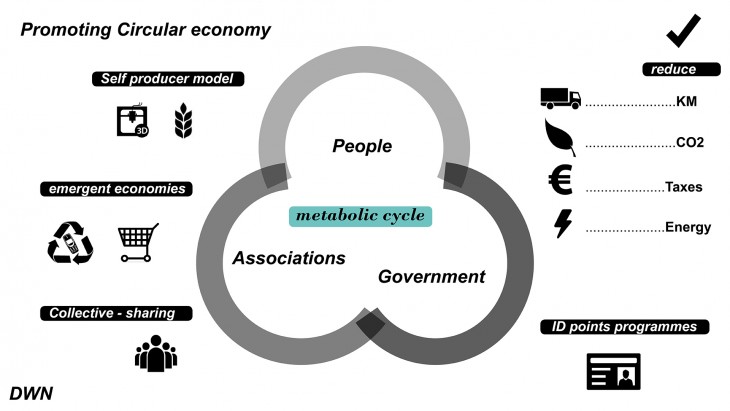
Finally the city was mapped through many aspects from more social ones such as immigrant population across the strip, economic ones such as unemployment rate and of course waste generation and by the principle of chromatic aberrations caused by overlapping of colors we could find the optimum places to start to grow our system.
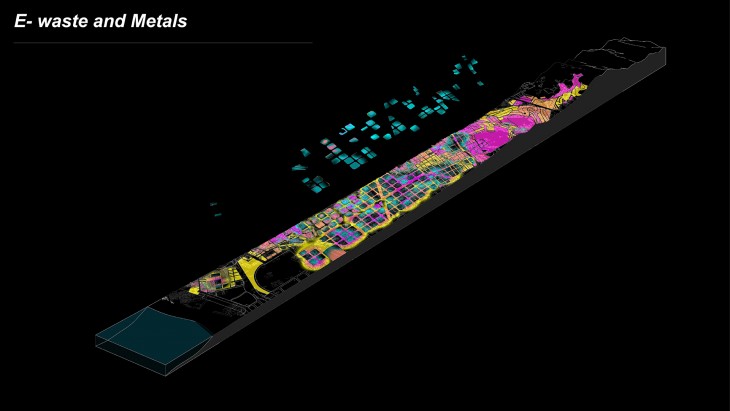
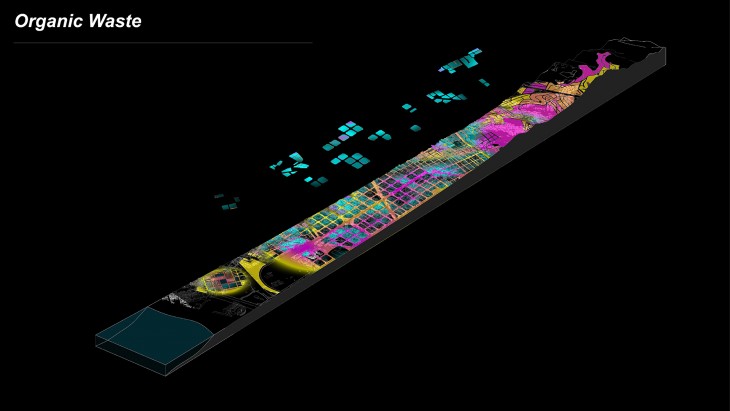
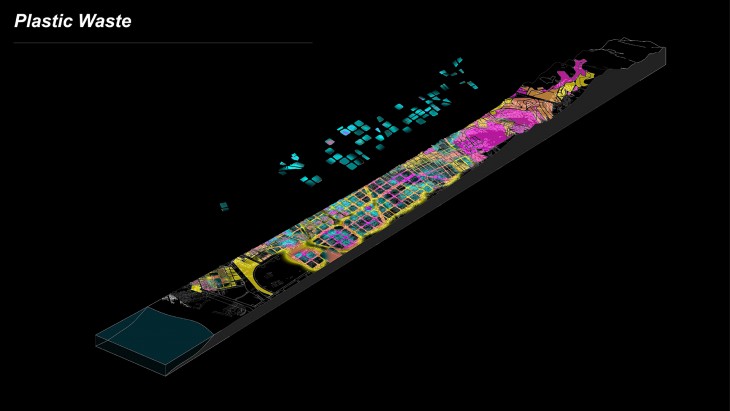
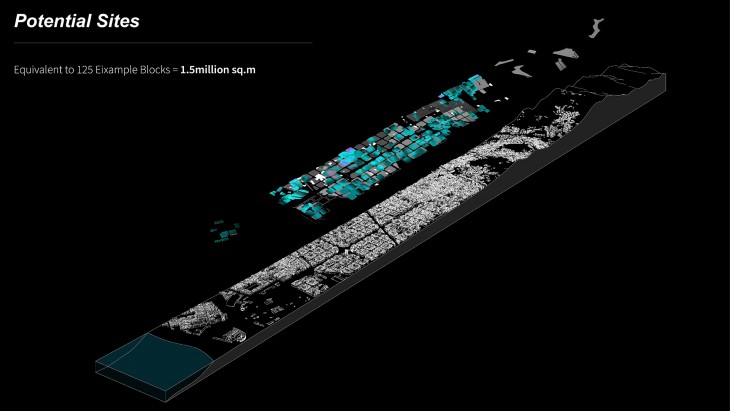
Supra-Digester is a project of IaaC, Institute for Advanced Architecture of Catalonia developed at MAA, e.g. Master in Advanced Architecture, in 2016 by:
Students: André Resende, Javier Fernandez, Jessica Dias
Faculty: Javier Peña, Oriol Carrasco, Rodrigo Rubio
